Scattered across our planet lie objects that defy our understanding of history, technology, and human capability. These mysterious artifacts challenge everything we thought we knew about ancient civilizations, making archaeologists scratch their heads and scientists question established timelines. From impossibly precise stone cutting to metals that shouldn’t exist for thousands of years, these discoveries force us to confront an uncomfortable truth: maybe our ancestors were far more advanced than we ever imagined.
The Antikythera Mechanism: Ancient Greece’s Computer

Deep beneath the Mediterranean Sea, sponge divers in 1901 stumbled upon what would become one of archaeology’s most confounding discoveries. The Antikythera Mechanism, a bronze device dating back to around 100 BCE, contains gear systems so sophisticated that similar technology wouldn’t appear again until the 14th century. This ancient Greek “computer” could predict eclipses, track planetary movements, and calculate the timing of Olympic Games with startling accuracy.
The device contains at least 37 meshing bronze gears, each precisely cut and calibrated to astronomical observations. Modern X-ray analysis revealed inscriptions and gear ratios that demonstrate knowledge of planetary cycles that we thought ancient Greeks didn’t possess. The mechanism’s complexity rivals that of 18th-century clockwork, making it a technological anomaly that appeared 1,500 years too early.
What makes this artifact even more mysterious is that no similar devices have been found from this period, suggesting either that this technology was lost or that we’ve barely scratched the surface of ancient Greek capabilities. The lone surviving mechanism forces us to reconsider everything we thought we knew about ancient technological limitations.
The Saqqara Bird: Egypt’s Mysterious Flying Machine
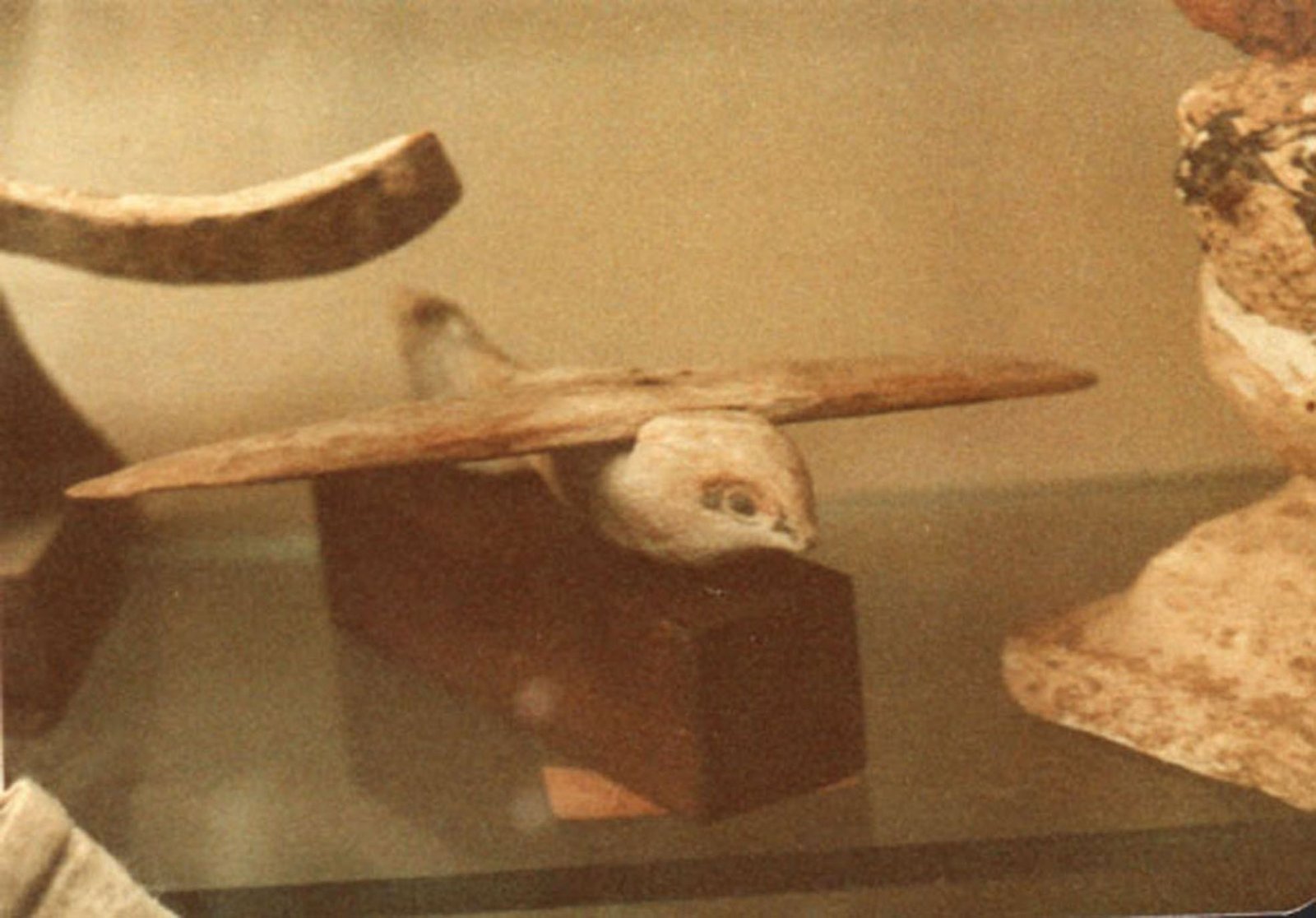
In 1898, archaeologists working in a tomb near Saqqara, Egypt, discovered a small wooden object that would spark decades of debate. Initially catalogued as a bird figure, this 2,200-year-old artifact possesses aerodynamic properties that seem impossible for its time. The object features a streamlined body, straight wings, and what appears to be a vertical tail fin – characteristics more consistent with modern aircraft than ancient bird sculptures.
Aviation experts who examined the artifact noted its remarkable resemblance to modern gliders and pusher-type aircraft. The wing design, weight distribution, and overall proportions suggest someone with advanced understanding of aerodynamics crafted this object. Unlike typical bird representations from ancient Egypt, the Saqqara Bird lacks legs and has wings that remain perfectly horizontal rather than curved.
Testing revealed that when launched, the object glides with surprising stability and distance. Some researchers theorize it might represent a scaled model of a larger flying machine, while others suggest it could be evidence of ancient flight experiments. The artifact’s aerodynamic sophistication continues to challenge our assumptions about ancient Egyptian technological capabilities.
The Baghdad Battery: Ancient Mesopotamian Electricity
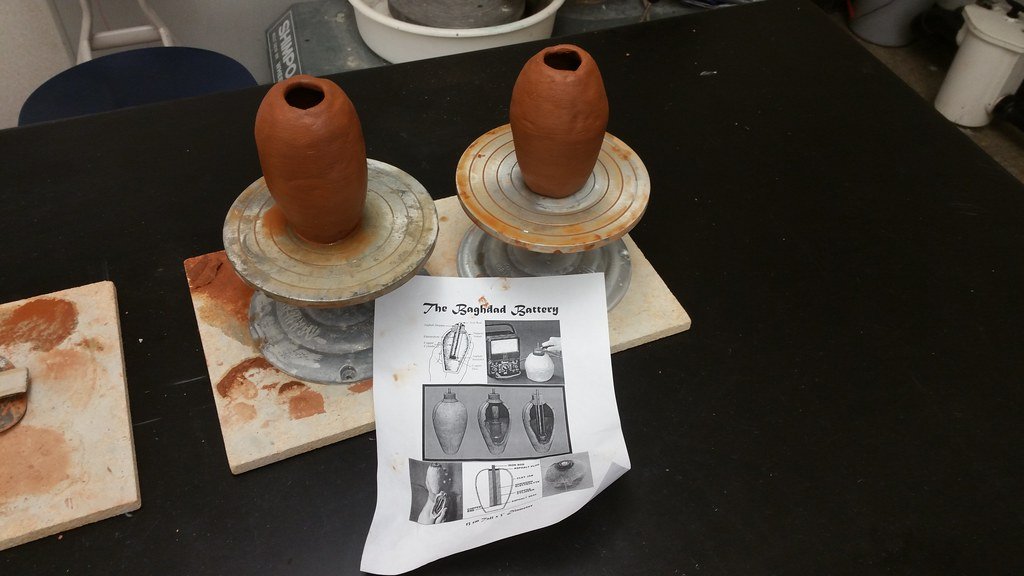
Workers excavating near Baghdad in 1936 unearthed clay jars containing copper cylinders and iron rods that would revolutionize our understanding of ancient technology. Dating to around 250 BCE, these objects – dubbed the Baghdad Batteries – appear to be galvanic cells capable of generating electrical current. The construction mirrors modern battery design so closely that it seems impossible to be coincidental.
Each jar contains a copper cylinder with an iron rod suspended inside, sealed with bitumen. When filled with an acidic solution like vinegar or citric acid, these devices generate approximately 1.1 volts of electricity. Replicas built by modern researchers have successfully powered small light bulbs and electroplated objects with thin layers of metal.
The discovery raises profound questions about ancient Mesopotamian knowledge of electricity and its applications. Some artifacts found in the region show evidence of electroplating, a process that would require electrical current. These batteries predate Alessandro Volta’s invention by over 2,000 years, suggesting that ancient peoples might have understood and utilized electrical phenomena long before we thought possible.
The Dropa Stones: China’s Alien Discs
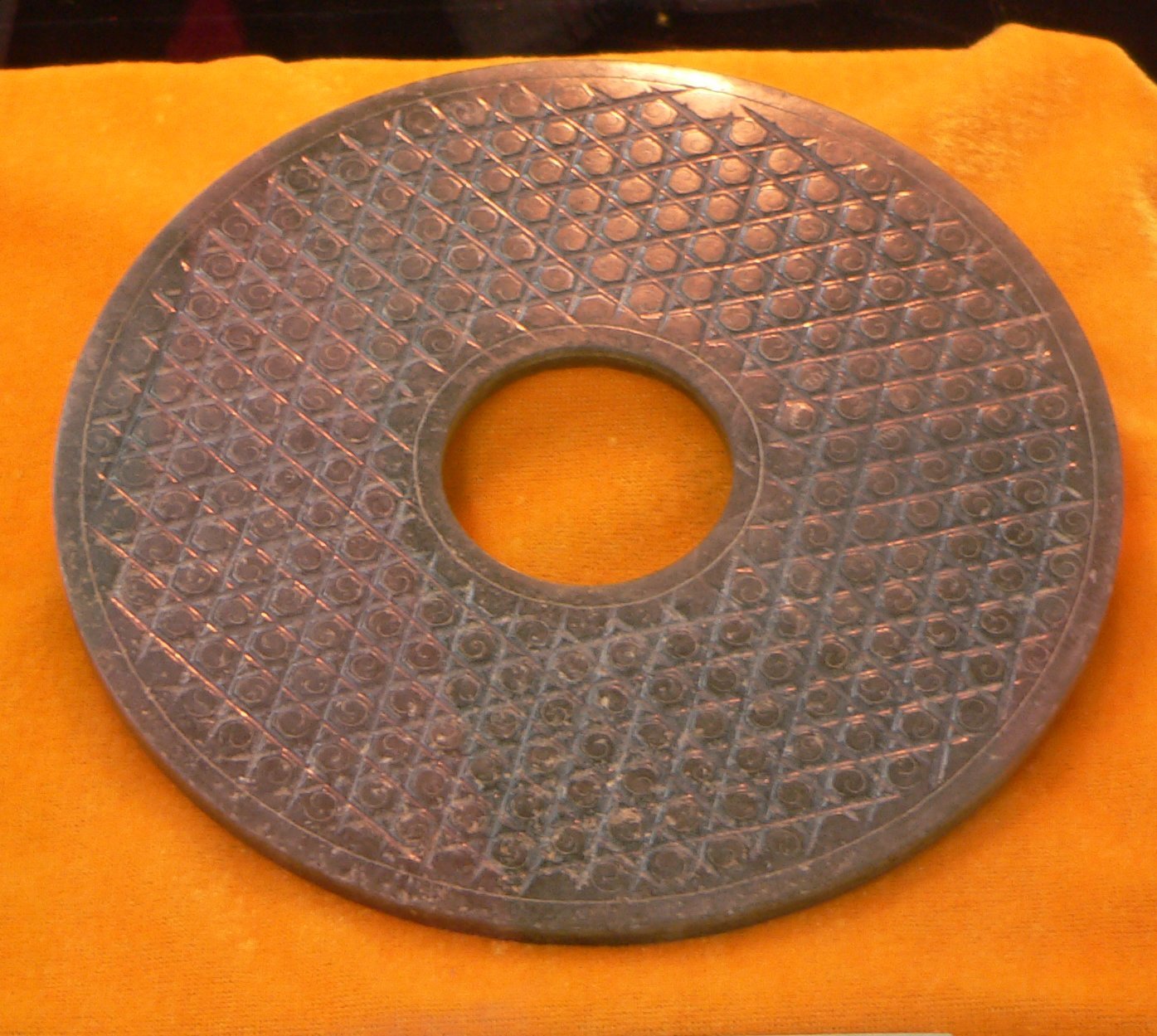
High in the remote mountains between China and Tibet, archaeologists in 1938 discovered hundreds of stone discs that would become one of the most controversial artifacts in history. These granite discs, each about nine inches in diameter with a hole in the center, contain spiral grooves filled with tiny hieroglyphic-like symbols. The stones, estimated to be 12,000 years old, tell a story that challenges everything we know about ancient history.
When Chinese scientists finally decoded the symbols in 1962, they revealed an extraordinary narrative about a group called the Dropa who supposedly crash-landed on Earth from a distant star system. The texts describe how these beings, stranded on our planet, were initially feared and hunted by local tribes before eventually being accepted. The story sounds like science fiction, yet the physical evidence of the stones themselves remains undeniably real.
The discs’ composition adds another layer of mystery – they contain high levels of cobalt and other metals that make them difficult to date using conventional methods. Their perfectly circular shape and precise central holes suggest advanced manufacturing techniques that seem impossible for prehistoric cultures. Whether the translation is accurate or not, the stones themselves represent a technological achievement that doesn’t fit our timeline of human development.
The Piri Reis Map: Impossible Antarctic Accuracy

In 1929, scholars studying ancient manuscripts in Istanbul’s Topkapi Palace discovered a map that would shake the foundations of historical geography. Created by Ottoman admiral Piri Reis in 1513, this map shows the coastlines of South America and Antarctica with impossible accuracy – impossible because Antarctica wasn’t officially discovered until 1820, and its ice-free coastline hasn’t been visible for thousands of years.
The map’s precision becomes even more startling when compared to modern satellite imagery. The Antarctic coastline shown on the map matches the actual land mass beneath the ice sheet, information that was only confirmed through seismic surveys in the 1950s. The mathematical accuracy of the South American coastline surpasses many maps created centuries later with superior instruments.
Piri Reis claimed he compiled his map from various ancient sources, including maps used by Christopher Columbus. This suggests that earlier civilizations possessed detailed knowledge of global geography that we’ve only recently acquired through modern technology. The map’s accuracy raises uncomfortable questions about advanced ancient seafaring capabilities and knowledge that seems to predate known exploration by millennia.
The Impossible Precision of Puma Punku

At 12,800 feet above sea level in the Bolivian Andes lies Puma Punku, a complex of megalithic structures that showcases stone-cutting precision that modern technology can barely replicate. These enormous stone blocks, some weighing over 130 tons, are cut with such accuracy that they fit together without mortar, their surfaces flat to within 2/10,000th of an inch. The precision exceeds what we can achieve with modern machinery.
The site’s H-shaped blocks and intricate interlocking joints demonstrate engineering sophistication that seems impossible for ancient cultures working with primitive tools. Each stone appears to have been cut with laser-like precision, featuring complex angles and surfaces that would challenge today’s computer-controlled cutting equipment. The blocks show evidence of drilling techniques that create perfectly round holes with consistent diameters.
What makes Puma Punku even more mysterious is its age – radiocarbon dating suggests the site is over 17,000 years old, predating known advanced civilizations by thousands of years. The technical skills required to create such precision with supposedly primitive tools forces us to reconsider our understanding of ancient technological capabilities. The site stands as a testament to engineering knowledge that we’re only beginning to comprehend.
The Genetic Anomaly of the Paracas Skulls

In the desert peninsula of Paracas, Peru, archaeologists have uncovered hundreds of elongated skulls that defy conventional understanding of human anatomy. These skulls, dating back over 2,000 years, are not simply the result of artificial cranial deformation – they possess fundamental structural differences that suggest they belonged to a distinct human subspecies or something else entirely.
The skulls are approximately 25% larger than normal human skulls and 60% heavier, with volume measurements that exceed the capacity of modern human brains. Most remarkably, they have only one parietal plate instead of the two found in all normal human skulls. DNA analysis has revealed genetic markers that don’t match any known human haplogroups, suggesting these beings had genetic characteristics unlike any modern human population.
The bone density of these skulls is significantly thicker than normal human bone, and their overall shape cannot be achieved through artificial binding techniques used by various ancient cultures. The nasal cavity structure and eye socket positions also differ dramatically from human anatomy. These physical characteristics suggest that whatever these beings were, they represented a significant departure from standard human biology.
The Metalworking Mystery of the Varna Civilization
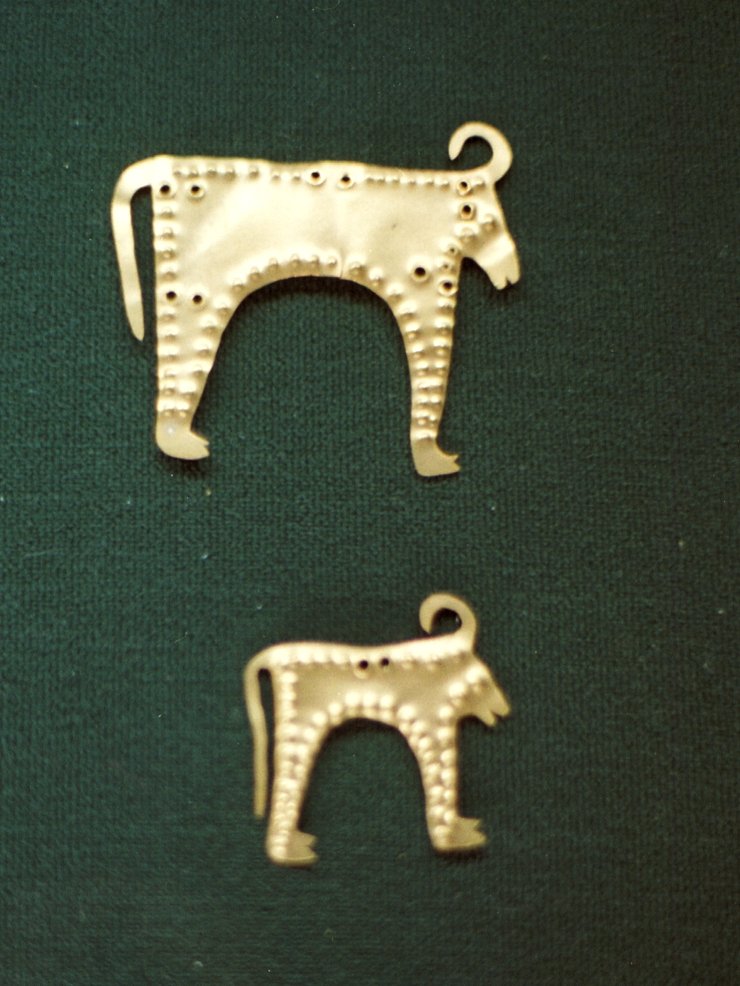
In 1972, archaeologists working near Varna, Bulgaria, uncovered a 6,000-year-old cemetery that completely rewrote our understanding of ancient metallurgy. The burial site contained the world’s oldest processed gold, but more importantly, it revealed metalworking techniques that shouldn’t have existed for thousands of years. The artifacts demonstrate knowledge of complex alloys and metalworking processes that we thought were much later developments.
The gold objects found in the tombs show evidence of sophisticated craftsmanship, including granulation, filigree work, and precision casting techniques. These methods require temperatures and technical knowledge that archaeologists didn’t believe existed in Neolithic Europe. The quality of the metalwork rivals that of much later civilizations, suggesting that advanced metallurgy developed much earlier than previously thought.
Among the finds were copper tools that contained trace amounts of arsenic, creating a bronze-like alloy that provided superior strength and durability. This deliberate alloying process indicates that the Varna people understood metallurgy at a level that predates the official Bronze Age by over a millennium. The discovery forces us to reconsider the timeline of human technological development and the sophistication of prehistoric European cultures.
The Acoustical Enigma of the Hypogeum
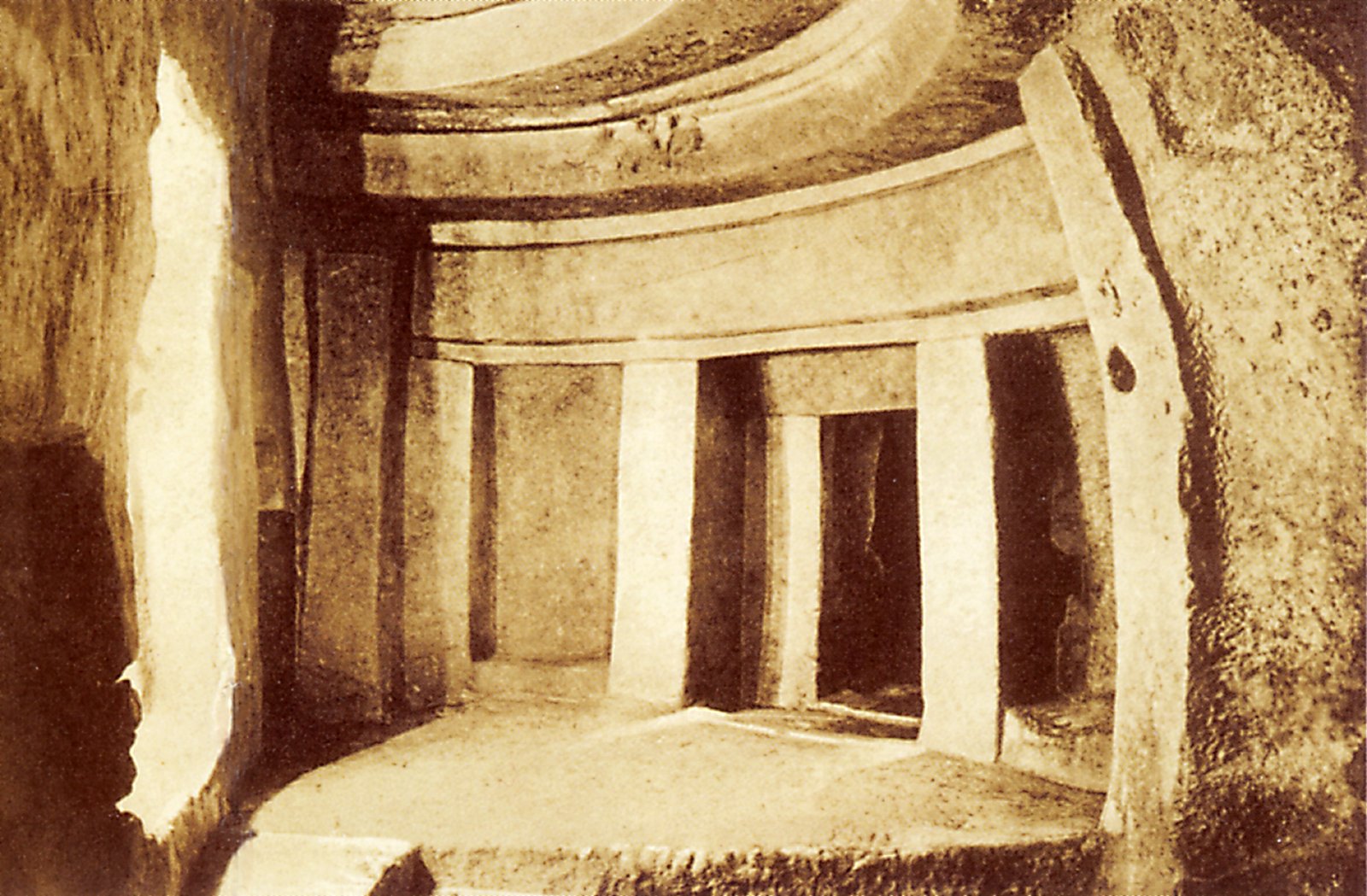
Beneath the streets of Malta lies the Hypogeum, a subterranean structure carved from solid limestone around 4000 BCE. This isn’t just another ancient building – it’s an acoustic marvel that demonstrates advanced understanding of sound engineering that we’ve only recently begun to appreciate. The chambers are designed to amplify and manipulate sound in ways that seem impossible for prehistoric architects.
The main chamber features a frequency resonance of exactly 110 Hz, a specific frequency that modern neuroscience has shown affects human consciousness and brain activity. When sounds are made in this chamber, they create unique acoustic effects that can be heard throughout the entire complex. The precision required to achieve such acoustic properties suggests advanced knowledge of mathematics, physics, and human psychology.
What makes the Hypogeum even more remarkable is that its acoustic properties appear to be intentionally designed rather than accidental. The curved walls and chamber shapes create specific resonance patterns that enhance certain frequencies while dampening others. This level of acoustic engineering requires sophisticated understanding of wave physics and architectural design that we associate with much later civilizations.
The Impossible Stones of Baalbek
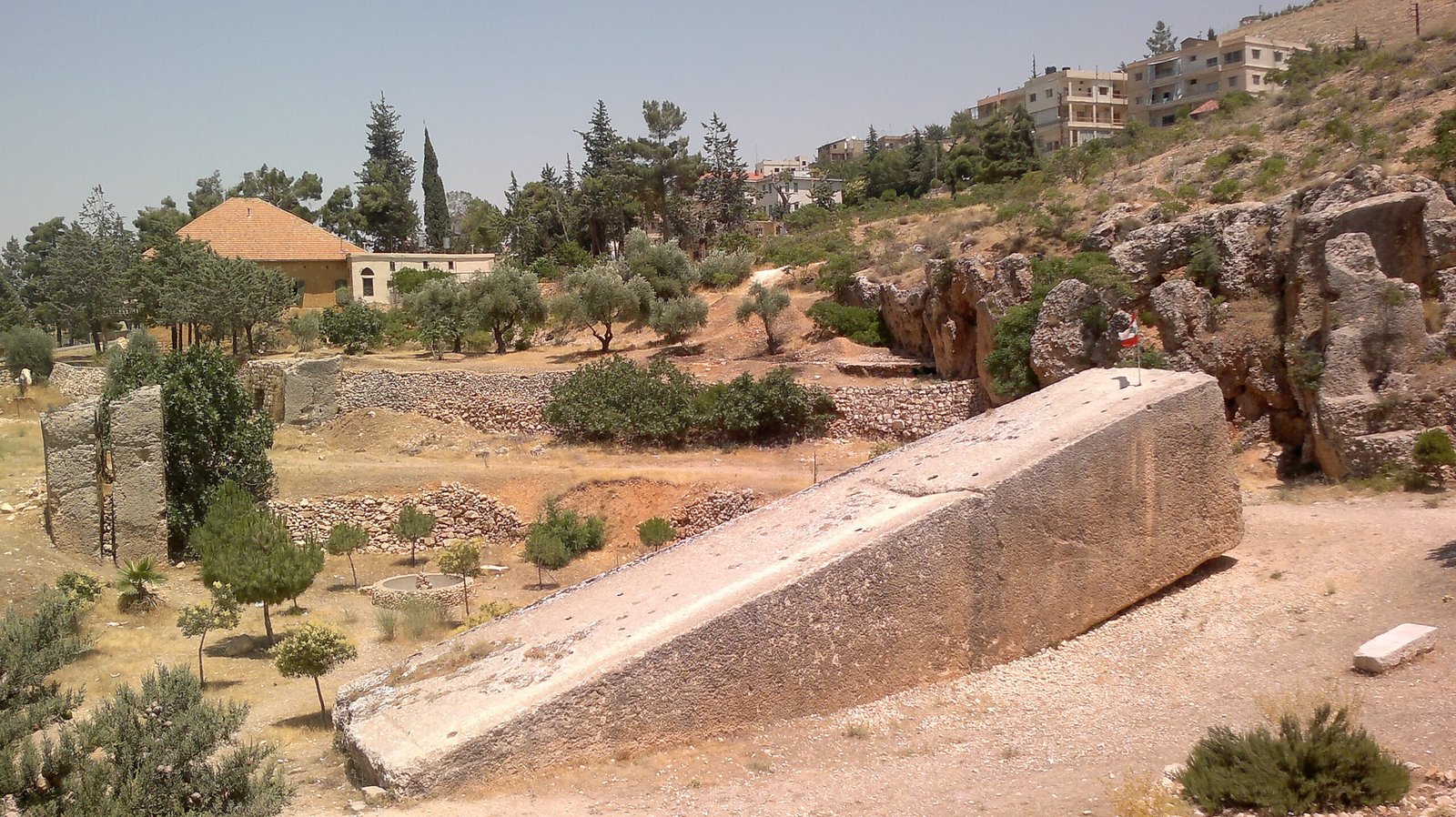
In the mountains of Lebanon stands Baalbek, home to some of the largest worked stones in human history. The Temple of Jupiter contains three massive limestone blocks, each weighing approximately 800 tons, that were quarried, transported, and precisely placed at a height of 20 feet above ground level. These monolithic stones, known as the Trilithon, represent an engineering achievement that challenges our understanding of ancient construction capabilities.
The precision with which these enormous blocks were cut and fitted together defies explanation using known ancient techniques. Each stone measures roughly 64 feet long, 14 feet high, and 12 feet deep, with surfaces so smooth and edges so precise that they appear to have been cut with modern machinery. The joints between the blocks are so tight that not even a knife blade can fit between them.
Perhaps even more mysterious is the Stone of the Pregnant Woman, a 1,200-ton block that remains in the nearby quarry. This massive stone was shaped and prepared for transport but never moved, raising questions about how ancient builders planned to move something that exceeds the lifting capacity of modern cranes. The technical challenges of quarrying, transporting, and placing such massive stones remain unsolved by conventional archaeology.
The Advanced Astronomy of Nabta Playa

Deep in the Nubian Desert of southern Egypt, archaeologists have discovered what may be the world’s oldest astronomical observatory. Nabta Playa, dating back approximately 7,000 years, contains a complex arrangement of stone circles and alignments that demonstrate sophisticated understanding of celestial mechanics that predates Stonehenge by over 1,000 years.
The stone circle at Nabta Playa is precisely aligned with the summer solstice sunrise, but its sophistication extends far beyond simple solar observations. The arrangement includes sight lines that track the rising of specific stars, particularly Sirius, which was crucial to ancient Egyptian religious and agricultural practices. The precision of these alignments suggests advanced mathematical knowledge and long-term astronomical observation.
Computer analysis has revealed that the stone arrangements also track the precession of the equinoxes, a 26,000-year cycle that requires centuries of careful observation to detect. This level of astronomical sophistication indicates that ancient peoples possessed knowledge of celestial mechanics that we’ve only recently understood through modern astronomy. The site represents a level of scientific achievement that seems impossible for nomadic desert cultures.
The Technological Mysteries of Göbekli Tepe
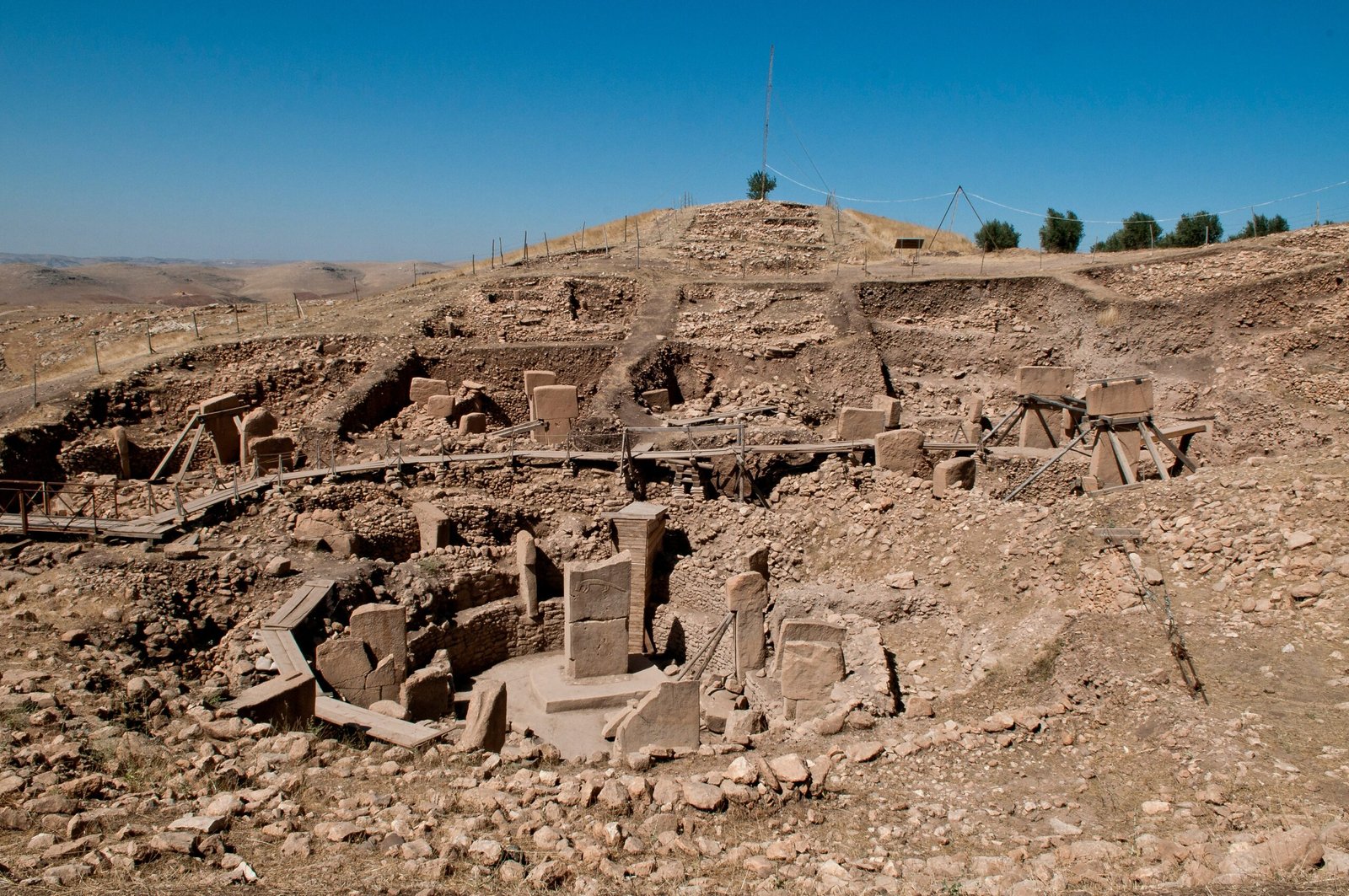
In southeastern Turkey, archaeologists have uncovered Göbekli Tepe, a massive temple complex that completely overturns our understanding of prehistoric human capabilities. Built around 9600 BCE, this site predates agriculture, permanent settlements, and the invention of writing by thousands of years. Yet it demonstrates construction techniques and artistic sophistication that we thought impossible for hunter-gatherer societies.
The site consists of enormous stone pillars, some weighing up to 16 tons, carved with intricate reliefs of animals and abstract symbols. These pillars were quarried from solid bedrock, transported across difficult terrain, and erected with precision that suggests advanced engineering knowledge. The craftsmanship rivals that of much later civilizations, with detailed sculptures that demonstrate artistic skills we didn’t think existed in prehistoric times.
What makes Göbekli Tepe even more mysterious is that it was deliberately buried around 8000 BCE, preserved beneath tons of earth for millennia. The complex organization required to construct such a massive site suggests sophisticated social structures and technical capabilities that don’t fit our model of prehistoric human development. The site forces us to reconsider everything we thought we knew about early human civilization.
The Unexplained Precision of the Antikythera Mechanism’s Gears
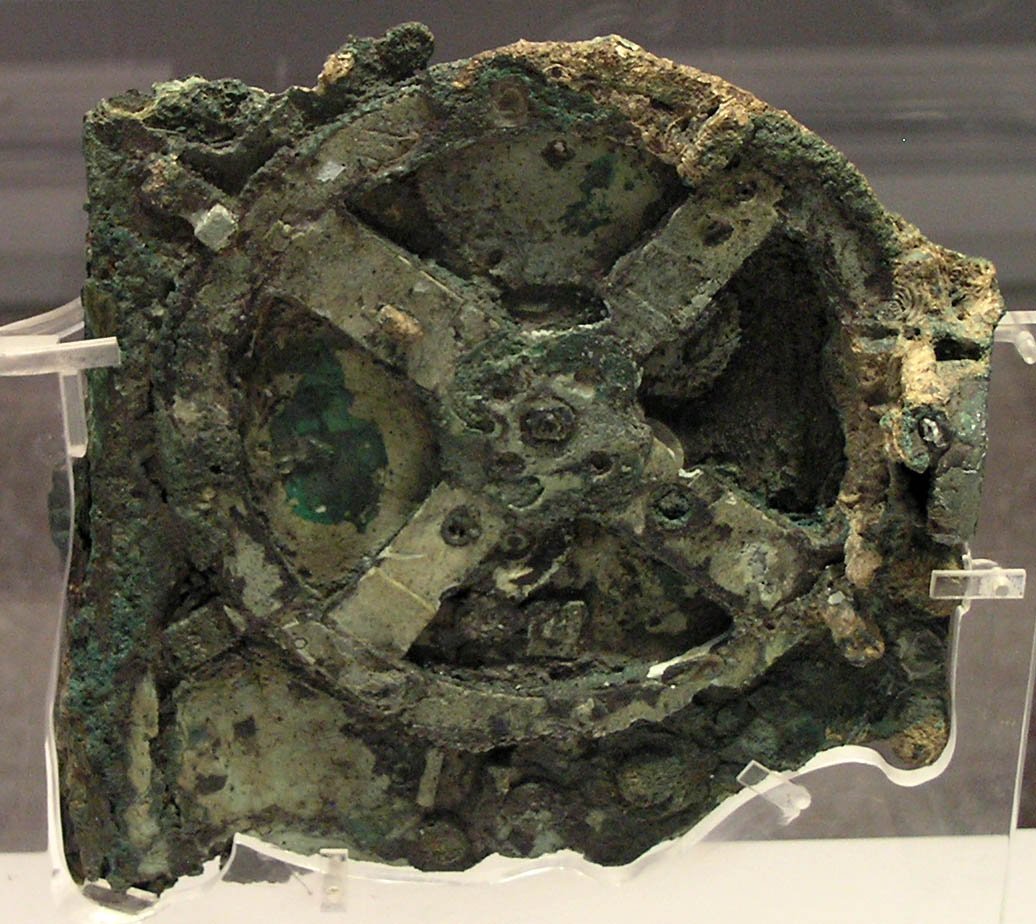
Recent detailed analysis of the Antikythera Mechanism has revealed gear-cutting precision that rivals modern manufacturing capabilities. The bronze gears, each containing between 15 and 223 teeth, are cut with such accuracy that the spacing between teeth varies by less than 0.02 millimeters. This level of precision requires manufacturing techniques that we thought were impossible without modern machinery.
The mechanism’s gear trains calculate complex astronomical cycles with mathematical accuracy that wasn’t equaled until the development of mechanical clocks in the 14th century. The device can predict lunar eclipses decades in advance and track the irregular orbit of the moon with corrections that demonstrate advanced understanding of celestial mechanics. The mathematical sophistication encoded in the gear ratios suggests knowledge of astronomy that we thought didn’t exist in ancient Greece.
Perhaps most remarkably, the mechanism includes a differential gear system that wasn’t “invented” again until the 16th century. This mechanical computing device performed calculations that required understanding of advanced mathematics and precision manufacturing that challenges our assumptions about ancient Greek technological capabilities. The mechanism represents a level of mechanical engineering that seems completely out of place in the ancient world.
The Genetic Evidence from Ancient Elongated Skulls
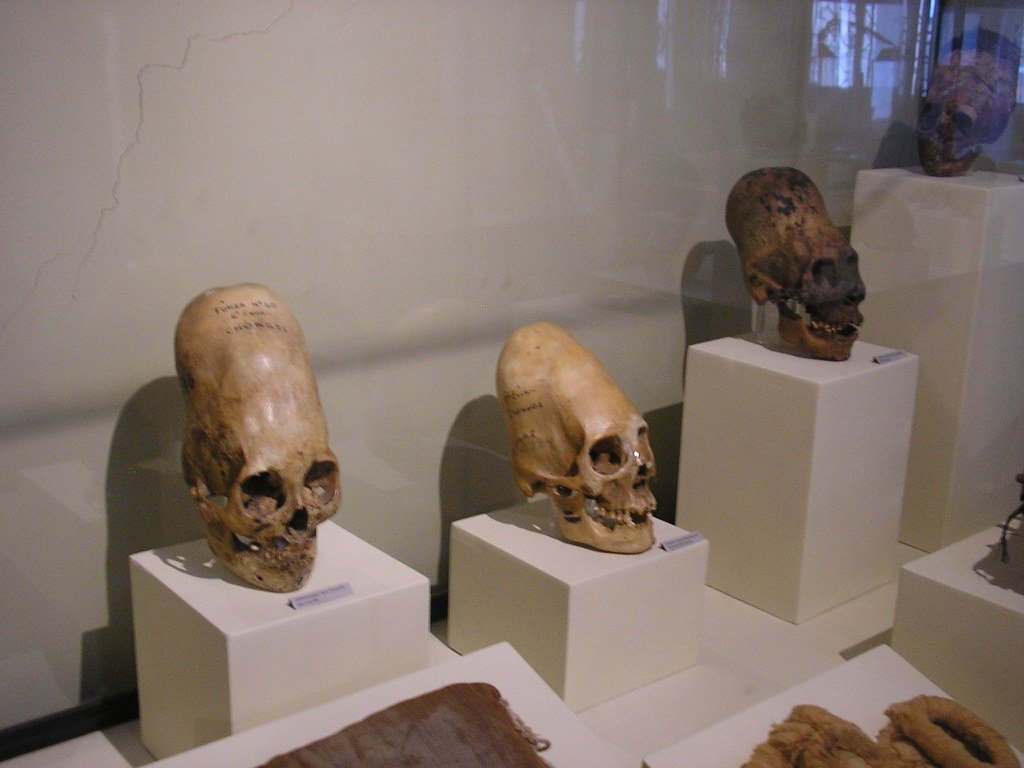
DNA analysis of elongated skulls from various global locations has revealed genetic markers that don’t match any known human populations. These skulls, found in Peru, Egypt, and other locations, contain mitochondrial DNA with sequences that appear to be from unknown human lineages. The genetic evidence suggests these beings had biological characteristics that differ significantly from modern humans.
The skulls show evidence of genetic mutations that affect cranial development, but these mutations don’t match any known human genetic disorders. The bone density, skull capacity, and structural differences appear to be the result of genetic factors rather than artificial modification. This suggests that these beings represented a distinct human subspecies with biological characteristics that we don’t fully understand.
Most intriguingly, some DNA samples have revealed genetic sequences that don’t match any known Earth-based life forms. While contamination remains a possibility, the consistency of unusual genetic markers across multiple samples from different locations suggests that these beings had biological characteristics that challenge our understanding of human evolution. The genetic evidence adds a scientific dimension to the mystery of these anomalous human remains.
The Impossible Dating of South American Megaliths

Throughout South America, archaeologists have discovered megalithic structures that predate known advanced civilizations by thousands of years. Sites like Sacsayhuamán in Peru contain precisely cut stone blocks that fit together with tolerances measured in millimeters, yet radiocarbon dating suggests they’re far older than the Inca civilization traditionally credited with building them.
The construction techniques demonstrated at these sites exceed what we thought possible for prehistoric South American cultures. The stones are cut with such precision that they create earthquake-resistant structures that have survived centuries of seismic activity. The technical knowledge required to achieve such construction suggests advanced understanding of engineering principles that we associate with much later civilizations.
What makes these sites even more mysterious is their global distribution and similar construction techniques. From Peru to Bolivia to Easter Island, megalithic structures demonstrate comparable precision and engineering sophistication, suggesting either widespread technological knowledge or contact between ancient civilizations separated by vast distances. The consistency of these construction techniques across different cultures and time periods raises questions about the true age and sophistication of ancient American civilizations.
The Technological Implications of Ancient Artifacts

The existence of these anomalous artifacts forces us to confront uncomfortable questions about human technological development. If ancient civilizations possessed advanced knowledge of astronomy, metallurgy, engineering, and possibly even electricity, what happened to this knowledge? The gaps in our historical record suggest that human technological progress may not have been the steady upward climb we imagine.
These artifacts demonstrate that ancient peoples had capabilities that we’ve only recently rediscovered through modern science. The precision of ancient stone cutting, the sophistication of astronomical calculations, and the advanced understanding of metallurgy suggest that prehistoric humans achieved technological levels that challenge our evolutionary timeline. The implications extend beyond archaeology into our understanding of human potential and historical development.
Perhaps most significantly, these discoveries suggest that human civilization may be far older and more sophisticated than we’ve previously recognized. The technological achievements represented by these artifacts indicate that advanced knowledge existed in the ancient world, was lost, and had to be rediscovered through centuries of scientific progress. This pattern of technological advancement and loss may be more common in human history than we’ve previously understood.
The mysteries surrounding these six artifacts continue to challenge our understanding of human history and technological development. From the computer-like precision of the Antikythera Mechanism to the impossible construction techniques of Puma Punku, these discoveries force us to reconsider our assumptions about ancient human capabilities. The genetic anomalies, advanced metallurgy, and sophisticated astronomical knowledge they represent suggest that our ancestors possessed scientific understanding that we’ve only recently achieved through modern technology.
These artifacts serve as humbling reminders that human knowledge and capability may have peaked and declined multiple times throughout history. They challenge us to remain open to possibilities that don’t fit our current historical models and to continue investigating the mysteries of our past. The existence of these impossible artifacts proves that human potential has always exceeded our expectations – the question is, what other impossibilities are we waiting to discover?




